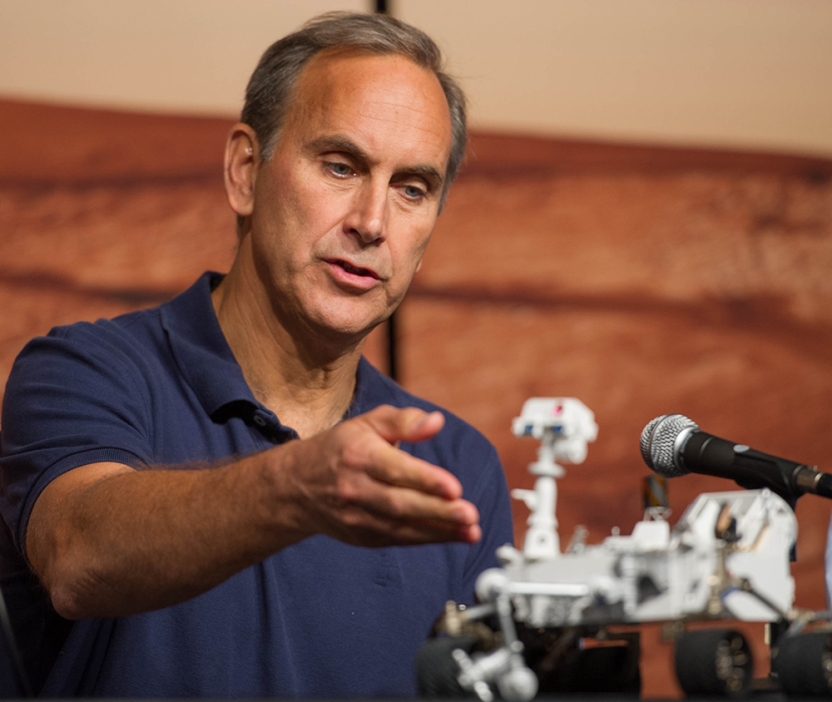The Geologic History of Mars

MIDDLEBURY, Vt. – John Grotzinger, the project scientist on the NASA mission that put the Curiosity rover on the surface of Mars, gave a technical lecture on “Models for Compositional Variations in the Murray Formation Mudstone, Gale Crater, Mars” on April 8 at Middlebury College.
The Fletcher Jones Professor of Geology at California Institute of Technology said the Mars Science Laboratory (MSL) mission is gaining insight into how water was involved in the early history of the planet and what its role might have been in supporting microbial habitability, if life had ever originated there.
Curiosity has been exploring the surface of Mars and sending data back to Earth since 2012, thus it was no surprise that Room 216 in Bicentennial Hall was nearly filled to capacity with science majors, faculty members, and astronomy buffs anxious to learn what the rover is discovering about the fourth planet from the Sun.
Grotzinger, whose daughter Hannah is a Middlebury senior, visited the campus in October and participated in a panel discussion on “Space Exploration and the Boundaries of Life.” His more recent presentation at Middlebury employed concepts of geology and chemistry to explain his ongoing research.
Curiosity completed its primary mission in 2014 after traversing over stream-rounded pebbles to a site where mud accumulated from an ancient lake, according to Grotzinger’s Mars Research website. Using the 900-kg rover’s suite of sophisticated instruments – including cameras, spectrometers, sensors, sample-collection tools, and geochemical instrumentation – the mudstone samples yielded evidence that fresh water once existed on Mars.
An elemental building block of life, fresh water is viewed as a source of chemical energy capable of sustaining microbial life, according to Grotzinger, whose term as project scientist on the mission ended in 2014. Now as a participating scientist, Grotzinger and others are studying ancient environmental transitions seeking to identify habitable environments capable of preserving organic compounds. The goal of the Mars Science Laboratory is to search for habitable environments on Mars.
Grotzinger took his Middlebury audience through his latest research and projected a slide showing the following conclusions:
- The Basal Murray formation represents a long-lived ancient lake infilled by fine-grained mudstones with fine, rhythmic lamination;
- The Murray formation has higher SiO2 than the Bradbury group, thus suggesting additional source inputs;
- Mineral compositions show evolution from the base to the top of the Pahrump Hills section;
- The highest silica compositions do not fit well with acid weathering; and
- Opaline silica may have precipitated as early diagenetic sediment.
Curiosity is doing a remarkable job “reading the record of the environmental evolution of the area,” including the discovery that there are organic materials on Mars. “On our next mission we want to bring these rocks back to Earth and get our hands on them in the lab,” Grotzinger said. “It is responsible to imagine [based on the science] that there could have been life on Mars.”

